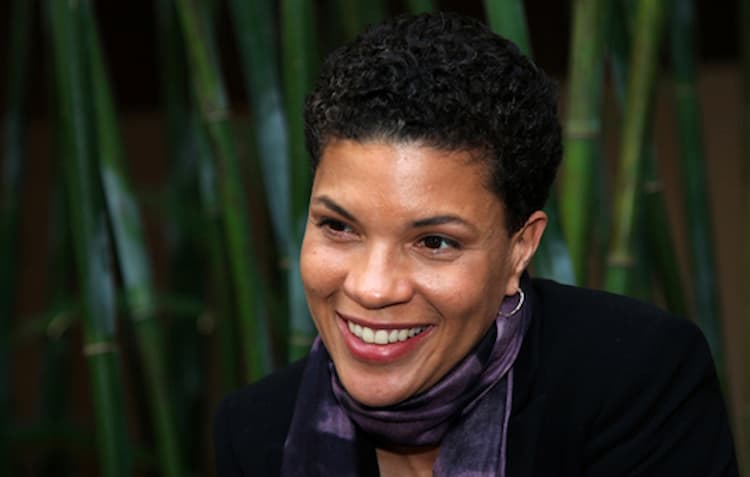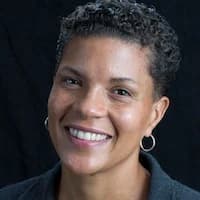Michelle Alexander Biography
Michelle Alexander is a civil rights activist and writer from the United States. Her best-known book is The New Jim Crow: Mass Incarceration in the Age of Colorblindness, published in 2010. She has been an opinion columnist for The New York Times since 2018.
How old is Michelle Alexander? – Age
She is 55 years old as of 7 October 2022. She as born in 1967 in Stelle, Illinois, United States.
Michelle Alexander Family
Alexander was born in 1965 to an interracial couple, John Alexander and Sandra Alexander (née Huck). Her family relocated to the San Francisco area in 1977, where her father worked as an IBM salesman.
Michelle Alexander Education
Alexander went to high school in Ashland, Oregon, with her younger sister, Leslie Alexander, who went on to become a history professor and the author of the 2008 book African or American? Black Identity in New York City, 1784-1861. Alexander received a B.A. from Vanderbilt University, where she was a Truman Scholar. She graduated from Stanford Law School with a J.D.
Michelle Alexander Wife – Children
Alexander married Carter M. Stewart, a Stanford University and Harvard Law School graduate, in 2002. Stewart was a senior associate at the San Francisco law firm McCutchen, Doyle, Brown & Enersen at the time, and later became the United States Attorney for the Southern District of Ohio. They have three kids. Her father-in-law is a former member of The New York Times board of directors. Alexander wrote in a 2019 opinion piece for The New York Times following the passage of Ohio’s “Heartbeat Bill” about being raped during her first semester of law school, becoming pregnant as a result, and then aborting the pregnancy.
Michelle Alexander’s Net Worth
He has an estimated net worth of $1 Million.
Michelle Alexander Book – The New Jim Crow
In 2010, Alexander published The New Jim Crow: Mass Incarceration in the Age of Colorblindness. In it, she argued that after the Civil Rights Movement, systemic racial discrimination in the United States resumed and that this resumption is embedded in the US War on Drugs and other governmental policies, with disastrous social consequences.
She compared the scope and impact of this to the Jim Crow laws of the nineteenth and twentieth centuries. Her book focused on the disproportionate incarceration of African-American men for a variety of crimes. In 2012, The New Jim Crow was reissued in paperback. In March 2012, it spent six weeks on The New York Times Best Seller list. All freshmen at Brown University were required to read the book in the fall of 2015. The author, according to the critic, overstates her case for decarceration and ignores violent crimes.
Michelle Alexander Union Theological
From 2016 to 2021, Alexander was a visiting professor at Union Theological Seminary in New York City.

Michelle Alexander Hidden Colors 2
Alexander spoke about the impact of mass incarceration in melanoid communities in the 2012 documentary Hidden Colors 2: The Triumph of Melanin. According to Alexander, more African American adults are under correctional control, in prison or jail, on probation or parole, than were enslaved in 1850, a decade before the Civil War began.
Michelle Alexander 13th
Alexander appeared in Ava DuVernay’s 2016 documentary 13th. Alexander described the evolution of racial disparity in the United States of America as an interviewee, from slavery to Jim Crow laws to the War on Drugs to mass incarceration. According to Alexander, “Once you’ve been branded a felon, so many aspects of the Old Jim Crow are suddenly legal again. As a result, it appears that in America, we have simply redesigned racial caste rather than abolished it “.
Michelle Alexander Career
From 1998 to 2005, Alexander was the director of the American Civil Liberties Union (ACLU) of Northern California’s Racial Justice Project, which led a national campaign against racial profiling by law enforcement.
She directed the Stanford Law School Civil Rights Clinic and clerked for Justice Harry Blackmun on the United States Supreme Court and Chief Judge Abner Mikva on the United States Court of Appeals for the District of Columbia Circuit. She specialized in plaintiff-side class action suits alleging race and gender discrimination as an associate at Saperstein, Goldstein, Demchak & Baller.
She was hired as an opinion columnist at The New York Times in 2018. There, she worked with Leslie Alexander on a piece titled “Fear,” which became a chapter in Nichole Hannah-Jones’ “The 1619 Project.”
